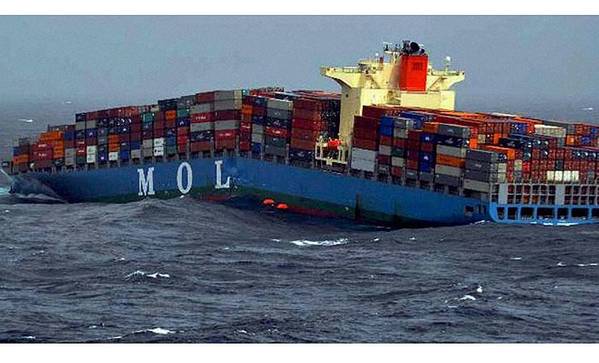
Based on both the results of its own independent investigation as well as the deliberations of the third meeting of the Committee on Large Container Ship Safety held on 28 October 2013, the ClassNK Casualty Investigation Team has released preliminary findings and safety measures resulting from the investigation into the causes of the sinking of the container ship 'MOL Comfort' as follows:
Preliminary Findings
Based on the presence of water-ingress in the bottom of the vessel’s midship at the outset of the casualty, the fracture in the vessel’s hull is considered to have originated from the bottom part of the vessel.
Hull strength and loads at the time of accident were assessed in order to investigate how the fracture occurred and progressed. Structural hull capacity was analyzed using non-linear finite element 3-hold modeling, and dynamic wave loads including whipping effects were also analyzed.
Weather, sea state and cargo loading condition data from the vessel’s previous voyages are being investigated to estimate the loads acting on the vessel. In addition, structural inspections were conducted on the sister vessels of the MOL Comfort.
During the inspections of the sister vessels, buckling type deformations measuring approximately 20mm in height were observed on the bottom shell plates in the vicinity of center line of midship area. However, it remains unclear at this stage as to whether this type of deformation could have served as a trigger for the casualty. Reinforcement work to increase the hull strength of the sister vessels is already being carried out as a preventative safety measure.
With cooperation from shipowners, structural investigations are also being carried out to determine whether similar deformations have occurred in large container vessels with designs differing from those of the MOL Comfort.
Numerical analyses of hull strength and applied loads continue to be conducted in order to develop a more detailed understanding of the casualty and establish countermeasures to prevent the occurrence of similar casualties in the future.
Safety Measures
Based on the preliminary findings noted above, the ClassNK Casualty Investigation Team has proposed the following safety measures be carried out on large container ships in order to prevent the occurrence of similar casualties.
The ClassNK Casualty Investigation Team will continue to work closely with the Committee on Large Container Ship Safety as it continues to investigate the MOL Comfort casualty and compile its final report on the incident.



